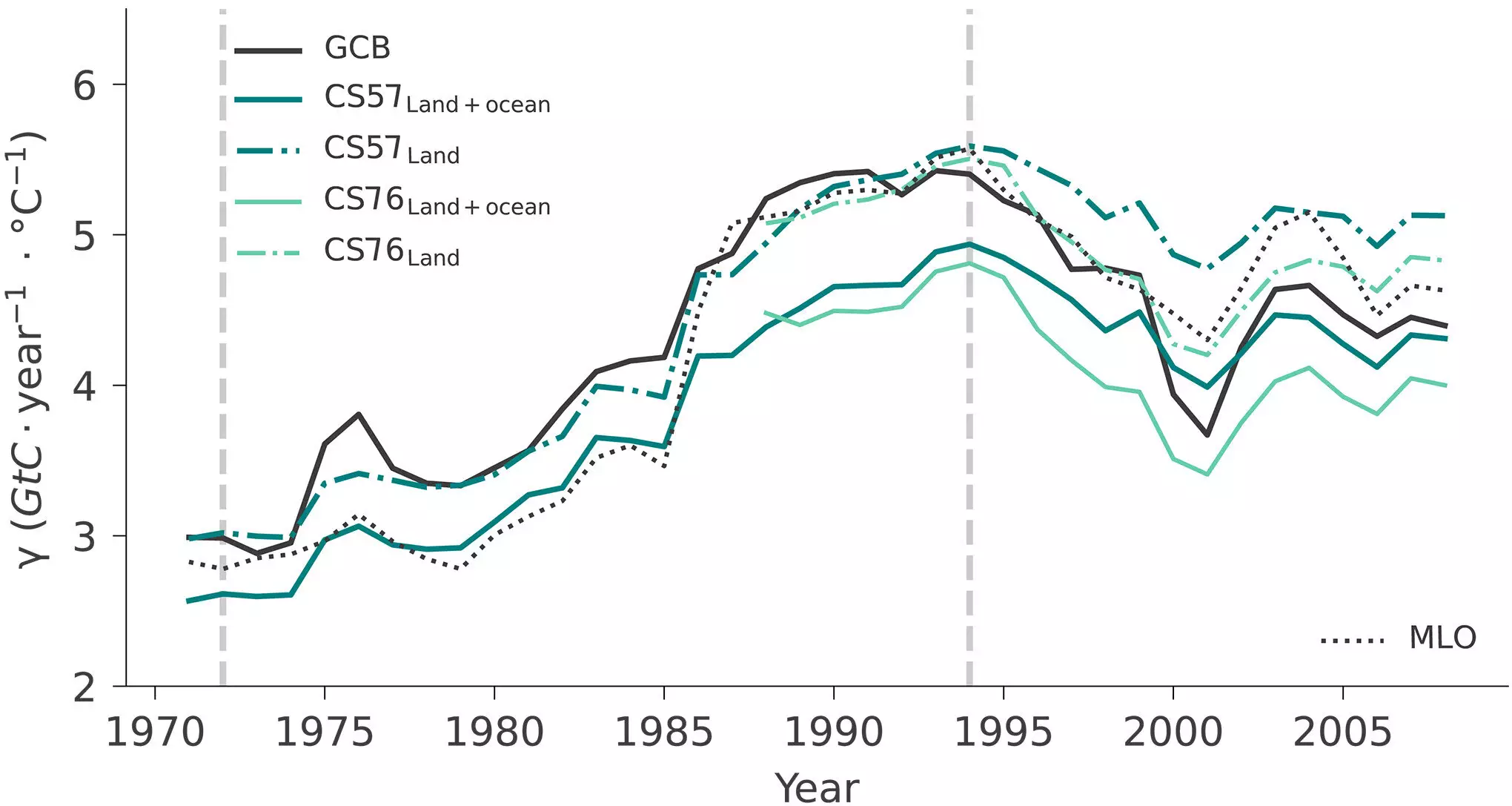A groundbreaking study from researchers at the Max Planck Institute for Biogeochemistry and Leipzig University presents findings that contradict long-standing notions regarding the relationship between atmospheric CO₂ levels and tropical temperatures. The research, recently published in *Science Advances*, spans the period from 1959 to 2011 and illuminates how the dynamics of carbon release and absorption in the tropics may be more nuanced than previously acknowledged. Specifically, the study highlights a concerning trend: the CO₂ concentration in the atmosphere has shown a significantly enhanced sensitivity to tropical temperature shifts, responding at a rate twice as strong when compared to earlier decades.
Historically, this increased sensitivity has been linked to the rise of drought conditions and alterations in the carbon cycle as a direct consequence of ongoing climate change. However, the new insights challenge this narrative, suggesting that more episodic, acute climatic phenomena—namely, extreme El Niño events—may be primarily driving this enhanced sensitivity.
El Niño events are notorious for disrupting weather patterns globally, particularly in tropical regions, leading to droughts and heatwaves that have profound implications for agriculture and natural ecosystems. Such extreme conditions can severely hinder plant growth, diminishing the capacity of tropical ecosystems to sequester carbon. The study indicates that during El Niño episodes, vegetative stress results in the release of carbon that would typically remain stored in soil and forests.
Notable El Niño events, such as those occurring in 1982-1983 and 1997-1998, have exacerbated this issue, demonstrating how these climatic extremes can lead to significant fluctuations in carbon storage across the globe. Thus, the researchers argue that the pronounced sensitivity of atmospheric CO₂ to temperature increases in the tropics might not stem from a gradual, long-term shift in climate but rather from the episodic impact of these extreme weather phenomena.
Na Li, the study’s lead author, emphasized that the heightened CO₂ levels observed are largely attributable to natural variability, as opposed to a fundamental and systematic change in the carbon cycle linked to climate change. This revelation opens up critical discussions about the existing frameworks used in climate science, urging a reevaluation of how individual climatic events, such as El Niño, contribute to broader climatic trends.
The concept of “slow-in, fast-out” dynamics serves as a crucial element in understanding this phenomenon. Professor Ana Bastos articulates that ecosystems may gradually absorb atmospheric carbon; however, sudden climatic events can lead to rapid releases of this stored carbon, complicating our grasp of carbon cycling mechanisms.
Implications for Climate Projections
The ramifications of this study extend beyond mere academic curiosity; they underscore significant uncertainties in how we forecast future climate scenarios. Previous assumptions posited a steady increase in sensitivity of CO₂ levels in response to rising temperatures in the tropics, framing it as a long-term trend attributable to climate change. In contrast, the current findings advocate for a refined understanding of the influence of extreme weather conditions on carbon dynamics.
Dr. Sebastian Sippel, a co-author of the study, stresses the necessity of delving deeper into how such catastrophic events shape carbon responses. This insight could lead to the enhancement of climate models, allowing for a more accurate portrayal of possible future climatic states.
As climate change continues to pose unprecedented challenges to global systems, it becomes increasingly important for the scientific community to unravel the complexities surrounding carbon emissions and their interactions with climate phenomena like El Niño.
With the expanding frequency and intensity of such extreme weather patterns, there is a pressing need to integrate insights from studies like this into climate modeling and policy-making. By acknowledging and incorporating the impact of episodic climatic variations, scientists and policymakers alike can work towards developing more robust strategies to mitigate the effects of climate change and its associated risks. As we navigate an uncertain climate future, understanding the underlying mechanics of carbon dynamics will be paramount.


Leave a Reply